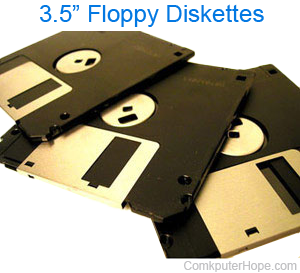How to fix a floppy drive working in Windows but not MS-DOS

Before following any of the steps below, check to see if your computer can boot from a floppy disk. If not, see our guide to troubleshooting the inability to boot from a floppy disk.
Incompatible device connected on floppy controller
Another device connected between the floppy and the motherboard may not work in DOS and therefore is causing the floppy not to work.
If you have any other devices (e.g., tape drive) connected on the floppy controller, temporarily disconnect the device.
Not set up properly in BIOS
Ensure that the floppy is configured in BIOS setup to match the specifications of your drive, such as 3.5" 1.44 MB.
In the BIOS setup, verify that the boot sequence lists the floppy first. For example, if available, the boot sequence should read:
- Floppy
- CD-ROM (compact disc read-only memory)
- Hard drive
LS-120 or SuperDisk used as a floppy drive
If this is not a standard floppy drive (for instance, an LS-120 or SuperDisk drive), verify that BIOS is properly configured to detect it.
Autoexec.bat or config.sys contains lines causing the floppy not to work
Verify that a line in your autoexec.bat or config.sys is causing your floppy drive not to work by temporarily renaming these files. To do this, follow the instructions below.
- Type the commands below at the prompt:
c: cd \ ren autoexec.bat autoexec.ch ren config.sys config.ch
- Once completed, reboot the computer and try accessing the floppy drive.
If this does resolve your issue, leave these renamed, as they are unnecessary for Windows 95 or above. If you have Windows 3.x, rename these files back to their original names by following the instructions below.
- Type the following at the prompt.
c: cd \ ren autoexec.ch autoexec.bat ren config.ch config.sys
- Once completed, reboot the computer and try accessing the floppy drive.
Different drive letter
Verify your floppy diskette drive is not being set up or placed on a different drive letter. In some circumstances, the floppy may be B: and not A:. At the prompt, try accessing B: instead of A:
